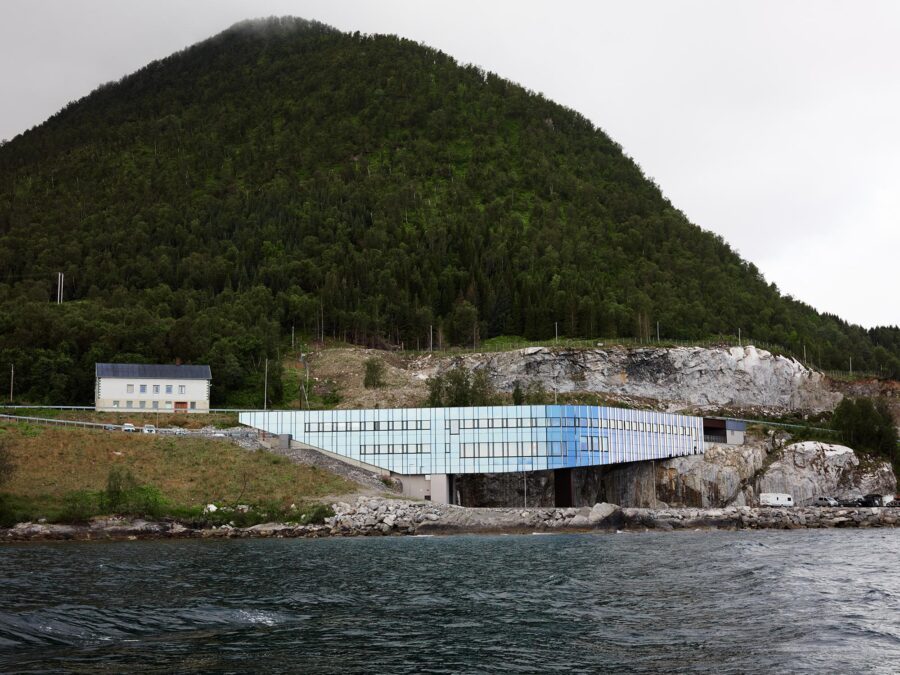
CULTURE


©︎ Le Minh Hoang
ベトナムの新興住宅地に位置する〈タイルネスト(Tile Nest)〉は、吊り下げられた瓦で構成された外装により、透過する光や風、香りを体感する「自然に浸る建築」です。
文化財が埋まっている可能性のある地域なことから建設前に掘削が必要であることを活かし、掘削された土を建物に利用しつつ、半地下とすることで地熱エネルギーを活用した住宅となっています。
建築から都市デザインまで手がけるベトナムの設計事務所 H&Pアーキテクツ(H&P Architects)が設計しました。
(以下、H&P Architectsから提供されたプレスキットのテキストの抄訳)

©︎ Le Minh Hoang

©︎ Le Minh Hoang
掘削された「土」と「土地」を活用する住宅
〈タイルネスト〉は、ハナム省フーリー市の新興住宅地に位置している。古代の墓地に近接しているこの地域では、地下深くにはまだ墓があると想定されており、調査のために建築前に古い土壌層まで掘削する必要があった。
このような観点から、古い土壌層まで掘削した際に出る土を住宅の一部として利用しつつ、半地下とすることで地熱エネルギーを活用するというコンセプトを考案した。


©︎ Le Minh Hoang
〈タイルネスト〉と名づけられたこの住宅は、地上に続くたくさんの穴やくぼみをもつ「巣」と、部分的に地下に埋もれた「竪穴式住居」が融合した空間を創り出している。
この組み合わせにより、多孔質で穴が開いているような外装による独特な波打つ外観と、 内側には大きな空間が広がる建築が構築された。

©︎ Le Minh Hoang

©︎ Le Minh Hoang
透過する光や風、香りを体感する「自然に浸る建築」
外側のシェルは、まるで浮かんでいるかのように吊り下げられたたくさんの瓦で構成されており、伝統的な家屋に見られる、積み重なる屋根や日除けを連想させる。
シェルと内部空間の間に広がる中間層には、高さの異なる植栽されたバルコニーがあり、魅惑的な眺望をもたらしつつ、室内空間の微気候を調整するのに役立つ。

©︎ Le Minh Hoang

©︎ Le Minh Hoang
古くからベトナムの人々にとって身近な素材であった瓦を、この住宅では、見透かすことで瓦の存在を感じさせるという、一風変わった手法で使われている。
これにより〈タイルネスト〉は、日差しの反射による花のような模様や、風が運ぶ植物の香りなど、さまざまな体験を空間に生み出す、 自然に浸る建築となるのである。

©︎ Le Minh Hoang

©︎ Le Minh Hoang

©︎ Le Minh Hoang

©︎ Le Minh Hoang

©︎ Le Minh Hoang

©︎ Le Minh Hoang

©︎ Le Minh Hoang

©︎ Le Minh Hoang

©︎ Le Minh Hoang

©︎ Le Minh Hoang

©︎ Le Minh Hoang

©︎ Le Minh Hoang

©︎ Le Minh Hoang

©︎ Le Minh Hoang





以下、H&P Architectsのリリース(英文)です。
Tile Nest
The house is located in a new developing urban area in Phu Ly city (Ha Nam province). Since this area is supposed to have graves deep underground (due to its proximity to the former cemetery), it is, therefore, necessary to excavate the old soil layer before construction so as to clear the above-mentioned assumption. This perspective then helps develop the concept of making use of the excavated site as part of the house (after the old soil layer is removed) so that not only distinguishable spacial features are created but also the possibility to harness geothermal energy is made.
Named as Tile Nest, the house communicates the idea of creating a space, a blend of the Nest with many nooks and crannies finding all their ways up to the ground and the Ancient Pit House partially hidden underground. This combination gives the house’s architecture a distinct corrugated appearance, with the shell felt like porous/ perforated on the outside and large space on the inside.
The outer shell is made up of many tiles suspended as if they were flying (provoking a thought of a stacked roof, and a sunshade, as found in a traditional house manner, ..); The middle layer is characterized with transitional green balconies at different heights, which brings about captivating views and helps regulate the microclimate for spaces for use inside.
For a long time, tile has become a familiar and popular material with Vietnamese people, yet it is applied to this house in an unusual way to make its presence felt by seeing through, touching and sensing properties, thereby creating different but close experiences in the space of flower-like patterns from sunshine reflection,, wind and scent of plants – an Architecture immersed in nature realized by a full-of-memory personalityArchitect: H&P Architects
Website: www.hpa.vn
Location: Phu Ly city, Ha Nam province, Vietnam
Team: Doan Thanh Ha , Nguyen Hai Hue, Trinh Thanh Huyen, Luong Thi Ngoc Lan, Tran Van Duong, Ho Manh Cuong, Nguyen Van Thinh
Land area: 300 m²
Total floor area: 450 m²
Completion date: July 2021
Main materials: Roof tiles 22 (Viglacera), steel, concrete
Photographer: Le Minh Hoang
Short film: https://youtu.be/jZ9OAG8U-jY
H&P Architects 公式サイト









